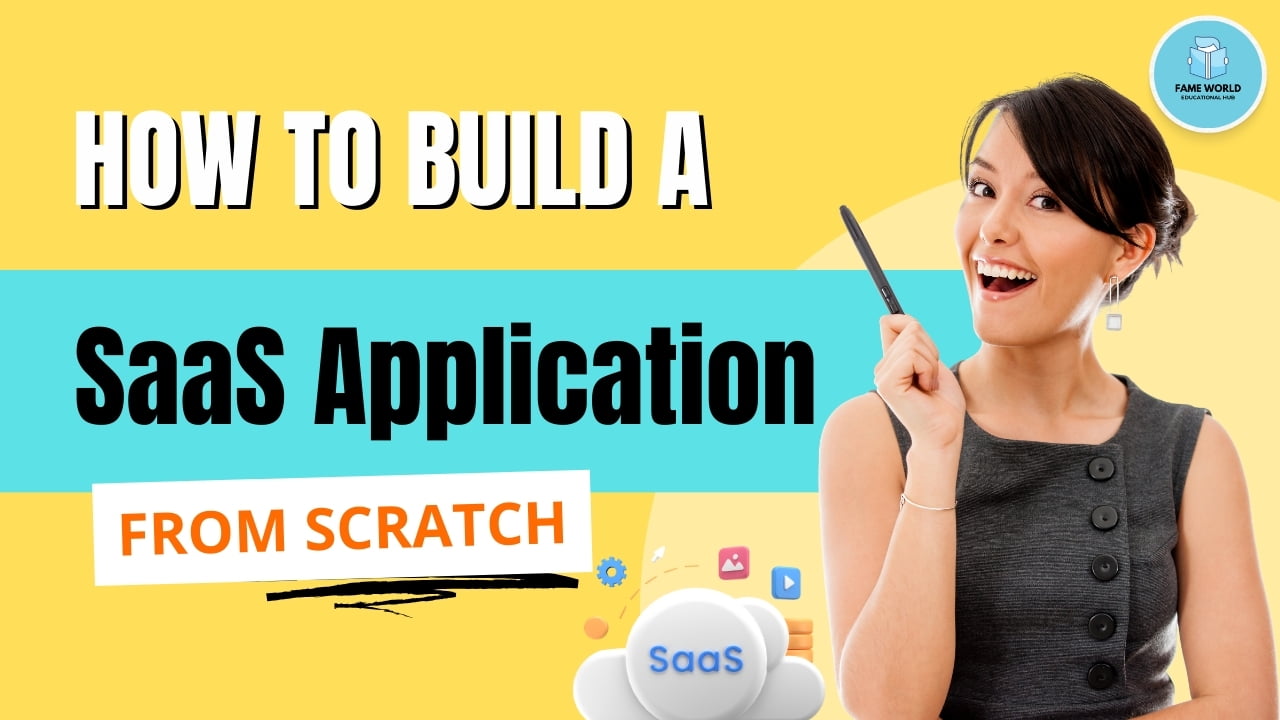Building a Software as a Service (SaaS) application from scratch can be a complex but rewarding endeavor. SaaS applications offer scalable, subscription-based solutions delivered over the internet, providing users with convenience and flexibility. In this comprehensive guide, we’ll walk you through the key steps and considerations for building a SaaS application from the ground up.
1. Understanding SaaS and Its Benefits
What is SaaS?
Software as a Service (SaaS) is a software delivery model where applications are hosted by a service provider and made available to users over the internet. Unlike traditional software that is purchased and installed on individual computers, SaaS applications are accessed via a web browser, typically through a subscription model.
Benefits of SaaS
- Cost-Effective: Reduces the need for upfront hardware and software investments.
- Scalability: Easily scale resources and features as user needs grow.
- Accessibility: Access from anywhere with an internet connection.
- Automatic Updates: Regular updates and maintenance managed by the provider.
- Flexibility: Customizable to meet specific business needs.
2. Planning and Research
Define Your Goals
Start by clearly defining the purpose of your SaaS application. What problem does it solve? Who is your target audience? What features are essential?
Conduct Market Research
Analyze the market to understand existing solutions and identify gaps. Research competitors, customer needs, and industry trends to ensure your application offers unique value.
Outline Your Features
Create a list of core features and functionalities your application will offer. Consider including:
- User authentication and management
- Data storage and management
- Subscription and billing systems
- Reporting and analytics
- Integration with other services and APIs
3. Choosing the Right Technology Stack
Front-End Technologies
- HTML/CSS/JavaScript: For building the user interface.
- Frameworks/Libraries: React, Angular, or Vue.js for dynamic, single-page applications.
Back-End Technologies
- Programming Languages: Python, JavaScript (Node.js), Ruby, or Java.
- Frameworks: Django, Express.js, Ruby on Rails, or Spring.
Database
- Relational Databases: PostgreSQL, MySQL.
- NoSQL Databases: MongoDB, DynamoDB.
Hosting and Infrastructure
- Cloud Providers: AWS, Google Cloud Platform, Microsoft Azure.
- Containerization: Docker for containerizing applications.
- Orchestration: Kubernetes for managing containerized applications.
4. Designing the Architecture
Software Architecture
Choose an architecture pattern that suits your application, such as:
- Monolithic Architecture: A single, unified application.
- Microservices Architecture: A collection of loosely coupled services.
Database Design
Design your database schema to efficiently manage data. Consider normalization, indexing, and data relationships.
Security Measures
Implement robust security measures, including:
- Encryption: For data in transit and at rest.
- Authentication and Authorization: Secure login and access control.
- Regular Security Audits: Identify and fix vulnerabilities.
5. Development Process
Set Up Your Development Environment
Prepare your development environment with necessary tools and configurations. Use version control systems like Git for code management.
Implement Core Features
Start by developing core features and functionalities. Focus on building a Minimum Viable Product (MVP) to test and validate your concept with users.
Testing
Perform thorough testing to ensure your application is functional, secure, and user-friendly. Include:
- Unit Testing: Test individual components.
- Integration Testing: Test interactions between components.
- User Acceptance Testing (UAT): Test with real users to validate functionality and usability.
6. Deployment and Scaling
Deployment
Deploy your application to a production environment. Use continuous integration and continuous deployment (CI/CD) pipelines to streamline the process.
Monitoring and Maintenance
Monitor application performance and user feedback. Use tools like New Relic, Datadog, or Prometheus for monitoring. Regularly update your application to fix bugs and introduce new features.
Scaling
Plan for scaling as your user base grows. Consider:
- Load Balancing: Distribute traffic across multiple servers.
- Horizontal Scaling: Add more instances of your application.
- Database Optimization: Improve performance with indexing, caching, and sharding.
7. Marketing and Customer Acquisition
Marketing Strategy
Develop a marketing strategy to promote your SaaS application. Use digital marketing techniques such as:
- Content Marketing: Create valuable content to attract and engage potential customers.
- Social Media Marketing: Leverage social media platforms to reach your audience.
- Email Marketing: Use email campaigns to nurture leads and retain customers.
Customer Support
Provide excellent customer support to address user issues and gather feedback. Consider:
- Help Desk: Implement a support ticket system.
- Knowledge Base: Create a comprehensive knowledge base or FAQ section.
- Live Chat: Offer real-time support through live chat.
8. Legal and Compliance
Terms of Service and Privacy Policy
Draft clear terms of service and privacy policy documents to protect your business and inform users about their rights and responsibilities.
Compliance
Ensure your application complies with relevant regulations such as GDPR, CCPA, or HIPAA, depending on your target market and industry.
Conclusion
Building a SaaS application from scratch requires careful planning, a well-defined technology stack, and a thorough development process. By focusing on core features, security, scalability, and customer acquisition, you can create a successful SaaS product that meets user needs and stands out in the market. As you embark on this journey, remember to stay adaptable and continuously iterate based on user feedback and market trends.
Feel free to reach out if you have any specific questions or need further assistance on your SaaS development journey!



